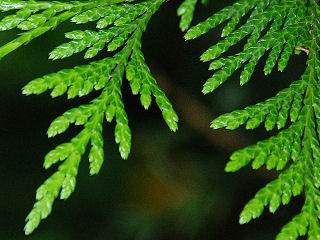
Leaves: Western red cedar has flat, scale-like leaves. They often have a white butterfly-shaped pattern on the lower surface.

Cones: The 1/2-inch cones sit on top of the branch and look like tiny rose buds.
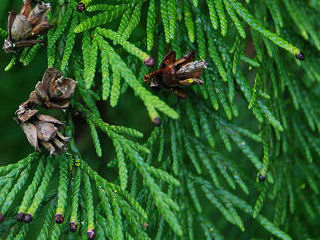
Bark: The redish-brown bark is stringy. The base is buttressed, with roots that seem to want to get away from the tree before they reach the ground.
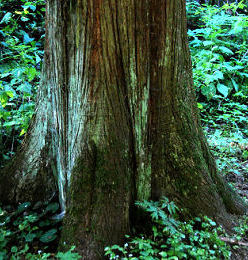
Where it grows: Western red cedar grows in moist areas throughout the Northwest between sea level and 5000 feet. In some locations, it grows higher, for example, around the rim of Crater Lake.
Western red cedar at Hoyt Arboretum
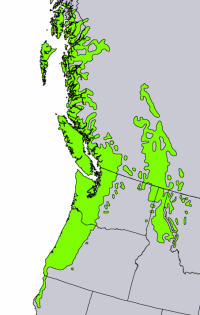
Uses: The wood of western red cedar is light and soft. It has a pungent, pleasing smell and an attractive red-brown color. Its resistance to rotting makes it the wood of choice for many uses, including shingles, decking, and fencing. Native people widely used it for thousands of years to make lodges, canoes, totem poles, tools, and utensils. They used the bark to make rope, baskets, fishing nets, and even clothes.
Names: Thuja is derived from the Greek name for a kind of juniper. Plicata means "pleated," referring to the pattern of its leaves. Other common names: giant arborvitae (Latin for "tree of life"), Canoe Cedar, Pacific red cedar, British Columbia cedar, and shinglewood.
Note that western red cedar is not a true cedar. That is, its genus is not Cedrus, the genus of the true cedars from the Middle East and Himalayas. Some writers indicate this by writing the name as "western redcedar."
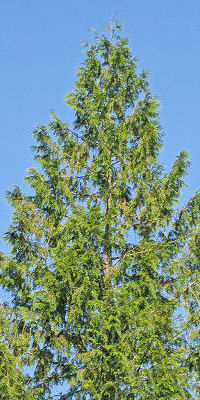
© 2011 Ken Denniston